The iPhone 6 Review
by Joshua Ho, Brandon Chester, Chris Heinonen & Ryan Smith on September 30, 2014 8:01 AM EST- Posted in
- Smartphones
- Apple
- Mobile
- iPhone 6
GPU Performance
While we don't quite have real games to benchmark against, we do have benchmarks that are reasonably good approximations of games, which heavily stress the GPU. For the most part, this means that we can see the performance of the A8's PowerVR GX6450 GPU but there are some aspects that are CPU-bound, which we'll discuss after the results.
Edit: Before I get into the results, I must caution that Basemark X will have inaccurate on-screen results as the benchmark was made using XCode 5.x in order to keep scores comparable between versions 1.1 and 1.1.1. This doesn't affect the overall score, which is solely calculated based upon off-screen performance.
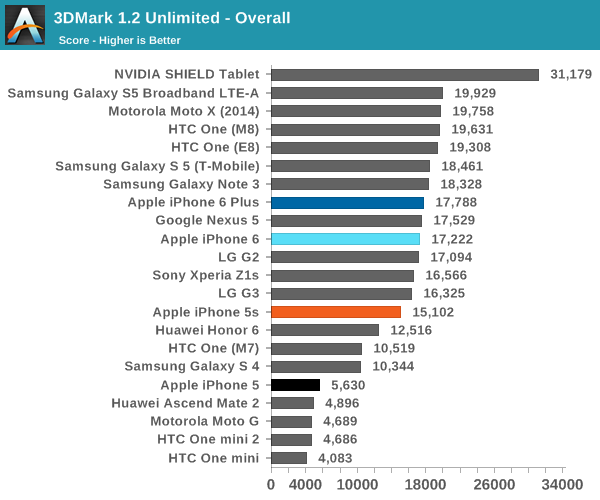
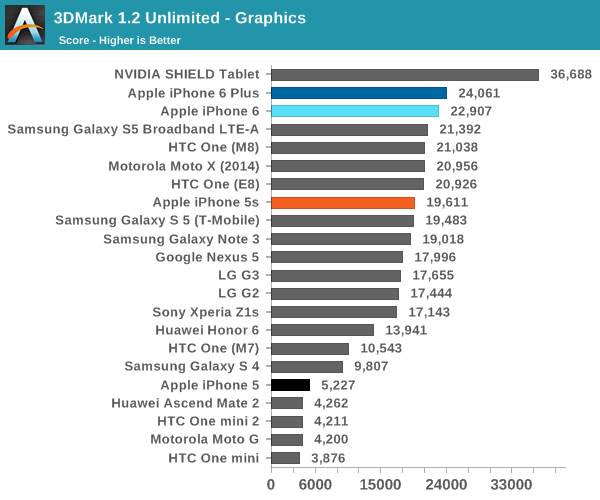
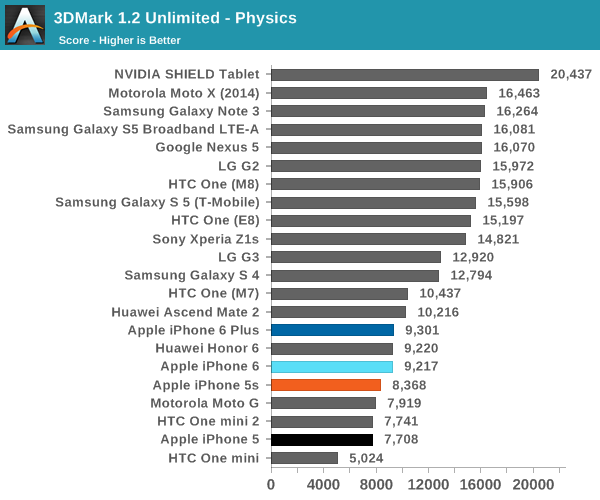
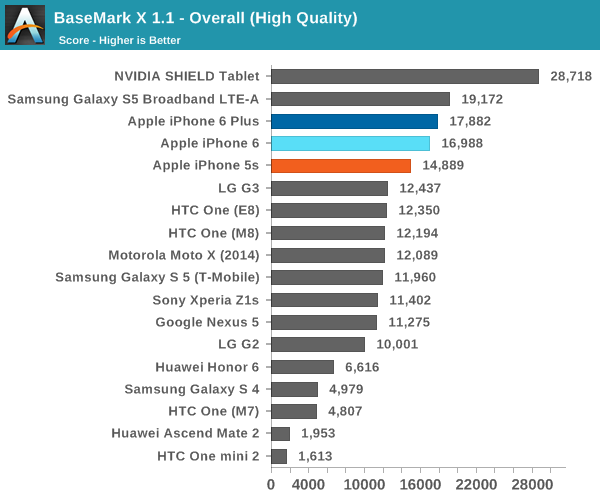

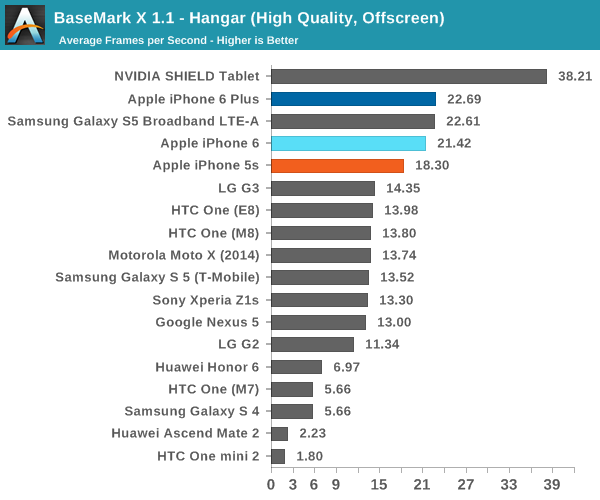

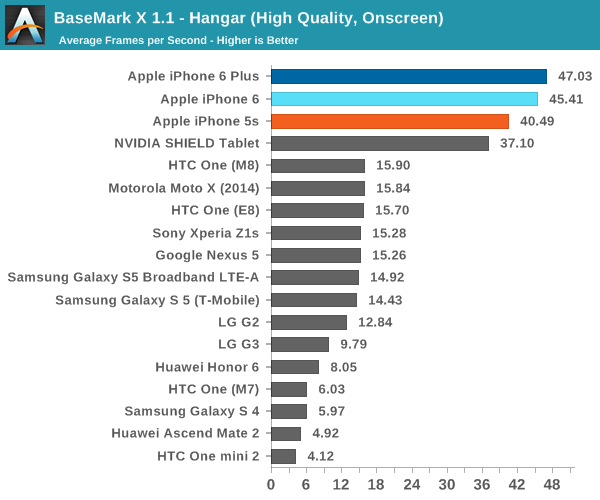
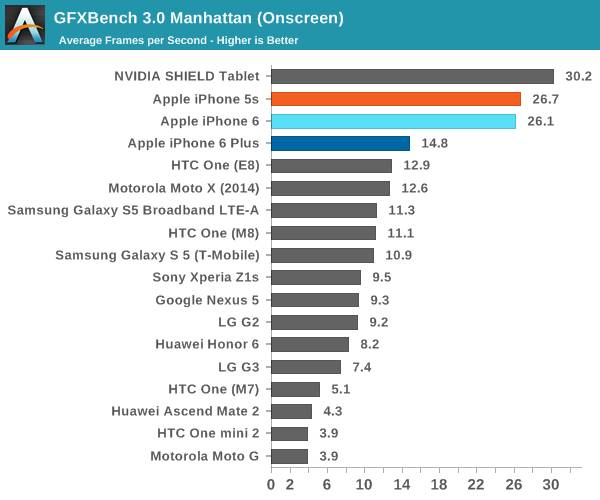


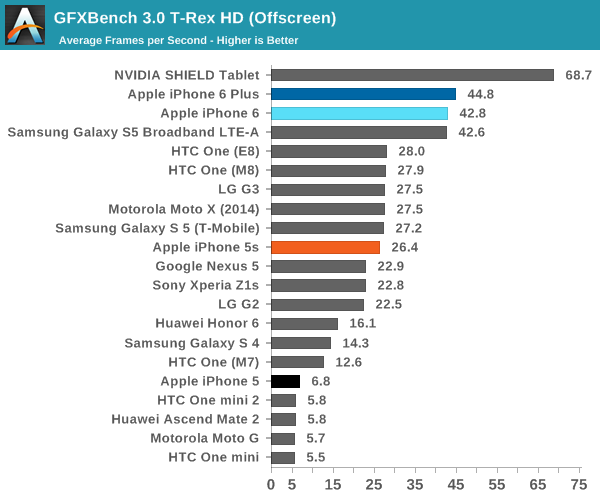
For the most part, we see that the GX6450 is at about the same level as Qualcomm's Adreno 420, which seems to track closely to expectations given that the A7's GPU was around the same performance as the Adreno 330. The 3DMark test does have an interesting result, but it seems that this is because 3DMark's physics test has a strong amount of data dependency that restricts the level of out of order execution that can be done. NVIDIA's Tegra K1 is the current leader in graphics performance, but of course it's also in a tablet instead of a smartphone so it's not a direct competitor.
NAND Performance
As we move towards the goal of seamless performance in everyday tasks, one significant factor is IO performance. While there's definitely a minimum level of performance that allows for generally acceptable smoothness, there's value in having higher storage performance (e.g. prevent bottlenecking in situations such as updating apps in the background). In order to test this, we use Androbench with some custom settings on Android and a custom utility developed by Eric Patno for iOS, who has been quite helpful with furthering our efforts to test storage performance.
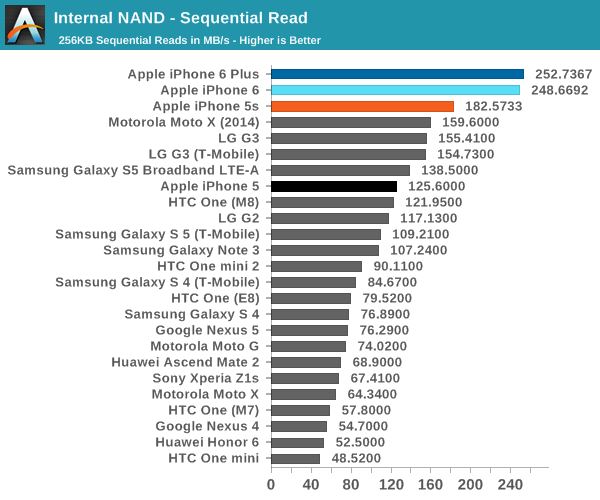
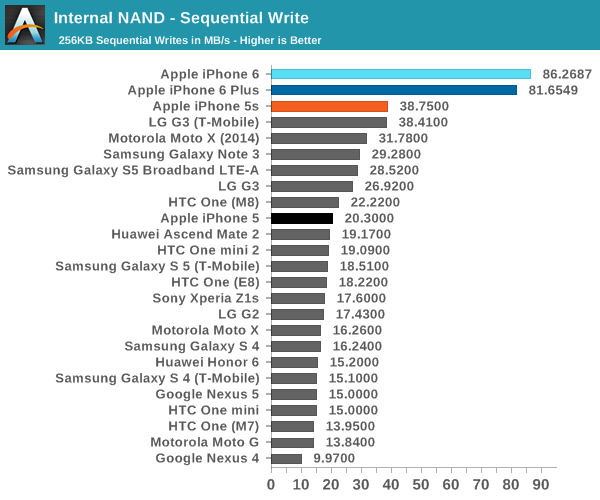
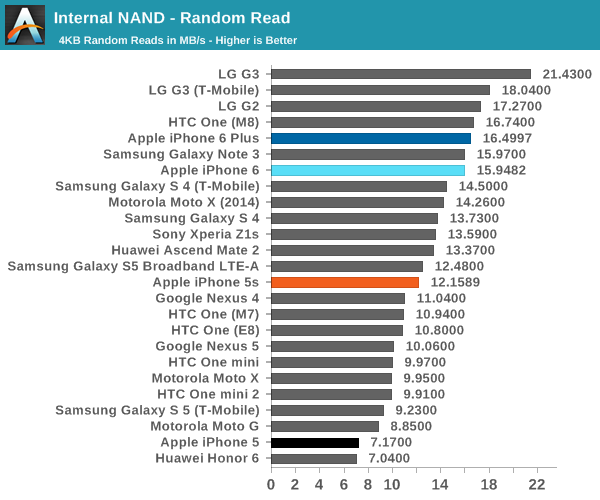
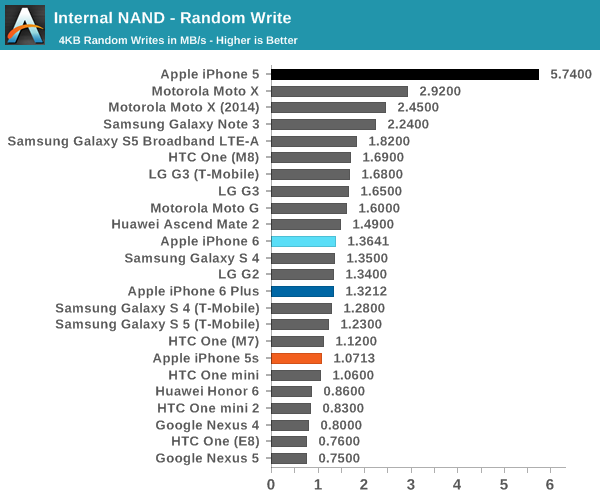
As this is the first time that we've looked into NAND performance on iOS devices, it's definitely worth scrutinizing the data a bit more closely than in most cases. There are a few notable cases here, which are the class-leading speeds for sequential reads and writes on the iPhone 6, but also the rather middling random read and write speeds for the iPhone 6 and 5s. The oddest result is definitely the iPhone 5, which is Ryan's personal unit and while the random read speeds are on the low side, random write speeds are easily record-setting.
In practice, with tablets and smartphones being less multitasking heavy than PCs/laptops, the sequential scores are probably slightly more relevant to the overall user experience. The iPhone 6 results show a significant increase in performance over the iPhone 5s in all of the tests, which is always good to see.










531 Comments
View All Comments
akdj - Friday, October 3, 2014 - link
I'm thinking you've NEVER used an iOS device in your lifetime. What s ridiculous comment. I use both and I'm a happy 'customer'. Half the RAM? Try a third. My Note 3 has 3GB. Cold boot to a fresh screen, within thirty seconds she's using 2.1-2.3GB of RAM. And my Note is a business tool without a bunch of apps, side loads or 'leaks' in software. Funny thing, happy customers make for healthy sales. VERY HAPPY People break RECORDS with each subsequent release...which, in turn, you're correct. Makes happy stock holders. Breaking records year after year isn't because they're using 'cheap' components or 'holding back'. It would've been MORE profitable to maintian the same pricing scheme without the 128GB (only industry OEM offering this much storage at these read and write speeds) & WITH 2GB of RAM. Significantly cheaper. But there's a solid reason and Apple's engineers are s bit more intelligent than you Mr. danBob. Sorry, the truth hurts but these dudes blew minds releasing the first 64bit SoC. First to utilize the A8 instruction set and they're designing low level graphic (Metal) programming to eliminate overhead of GL-ES. A 4MB buffer on the SoC and incredible optimization to its own OS.
Keep in mind ..,the development community is signficantly more active on iOS and they're making 85-90% of the defelopment 'money!' iOS users 'buy' apps. Spend money and enjoy their experience. Small display? 4;7" has been deemed perfect by MANY! And 5.5" is RIGHT there with. The largest available. Battery? Did you read the review? It's the Best of the Best. Period.
Before commenting, a suggestion. READ the article, review or 'book' before looking 'silly' in public!
Hemlocke - Tuesday, September 30, 2014 - link
Simple BOM breakdowns are not actually indicative of "less/more expensive." Apple's economies of scale are the envy of the tech world, and buying in great quantities and using SKUs across multiple lines brings the prices down for components. However, this takes a tremendous amount of capital, money that is spent fa in advance of receiving your goods, and generally your returns have to be enough to offset the money all of that capital is not making invested in some money-making vehicle.In mobile, basically two companies sell enough phones and tablets to do that, Apple and Samsung. Samsung sells more devices, but that is across many lines each year, with almost no common components. Thus, they aren't able to leverage economies of scale in the same manner as Apple, who makes two main lines each year (The newest iPhone and iPad), with secondary sales on the previous models, which still employ the internals introduced the previous year.
tl;dr: Samsung BOM is not the same as Apple BOM.
danbob999 - Wednesday, October 1, 2014 - link
Actually Samsung shares a lot of components between different phones. And they do have economies of scale on the same level as Apple. This is not enough to explain why Apple phones are cheaper to make according to iFixit estimates.cupholder - Wednesday, October 1, 2014 - link
Still a cheaper phone. Quit deluding yourself.Jumangi - Tuesday, September 30, 2014 - link
Yea their phones are so cheap that they are the best selling smartphones in the world. Go away hater.extide - Tuesday, September 30, 2014 - link
You do know that they are actually NOT the best selling smartphones in the world... right..?Hemlocke - Tuesday, September 30, 2014 - link
I'm pretty sure he meant the iPhone, which is the best-selling smartphone in the world, generation after generation.kirito - Tuesday, September 30, 2014 - link
I like to see your comment once samsung would release an all aluminum phone. so many excuses.kirito - Tuesday, September 30, 2014 - link
I like to see your comment once samsung would release an all aluminum phone. so many excuses.danbob999 - Tuesday, September 30, 2014 - link
They have. It's the Galaxy Alpha. I don't like this phone. I hope Samsung goes back to plastic.